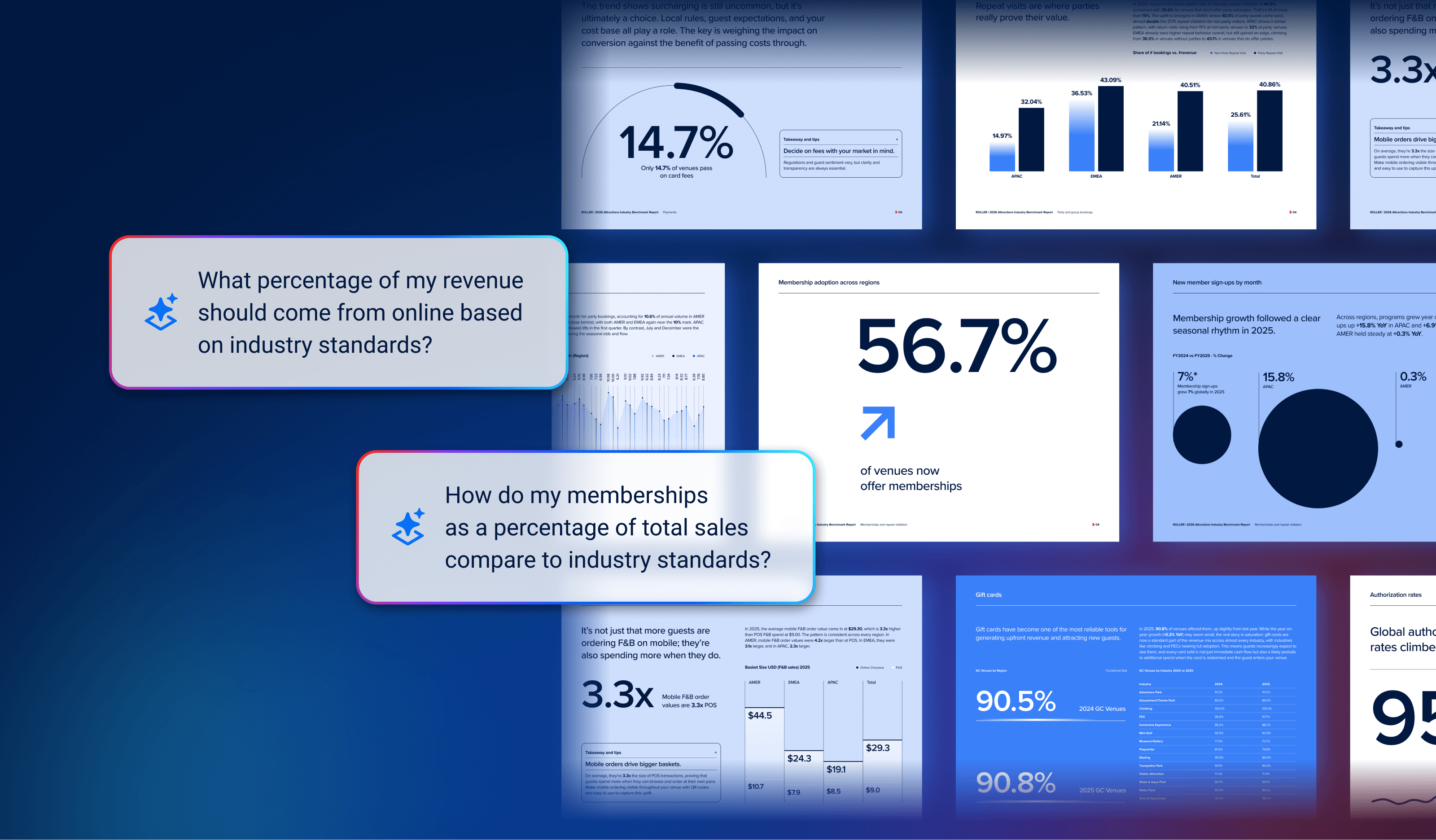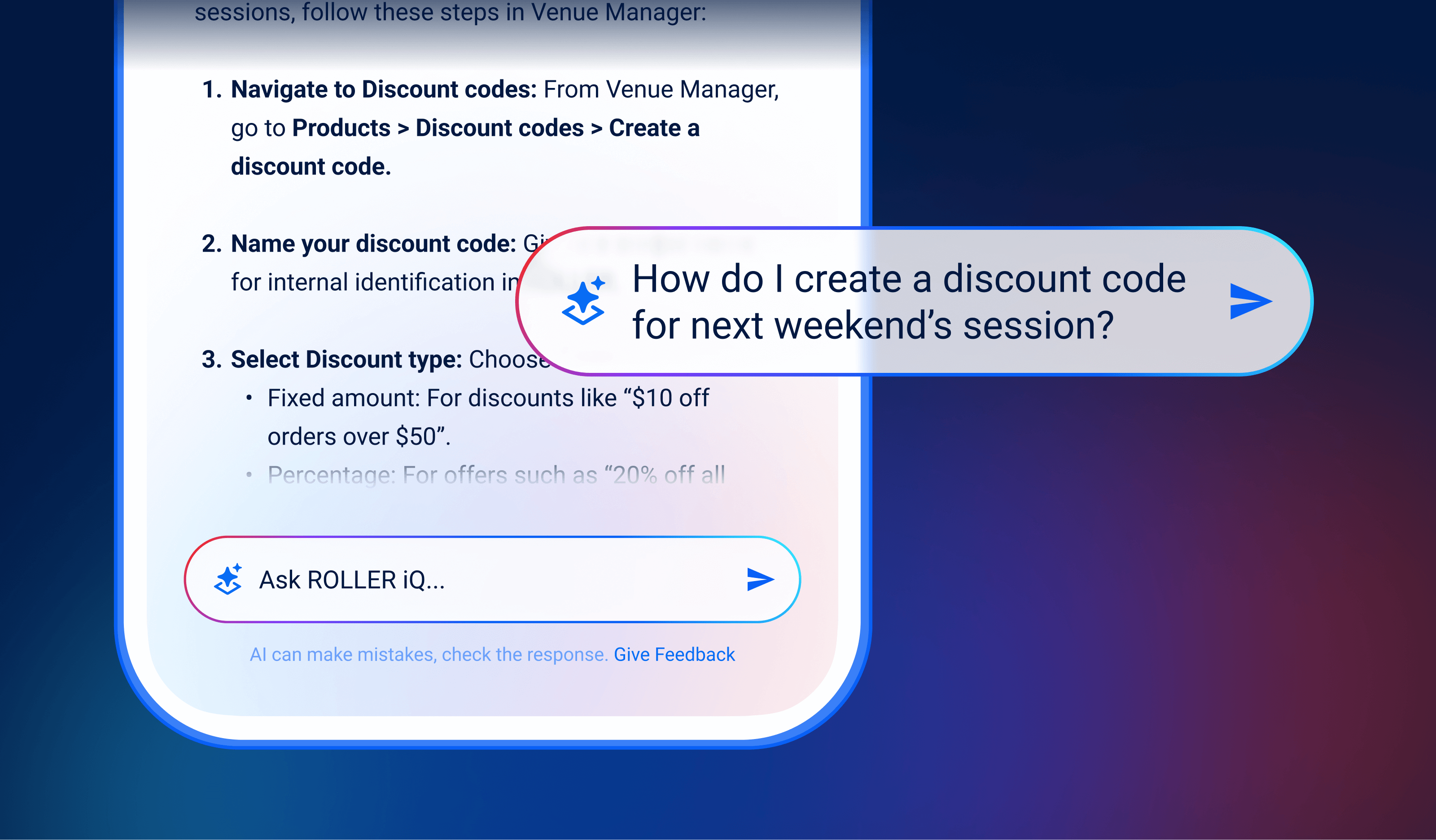Understanding Touchless Technology: A Guide for Amusement Parks and Entertainment Centers
.png?width=820&name=Understanding%20Touchless%20Technology_%20A%20Guide%20for%20Amusement%20Parks%20and%20Entertainment%20Centers_Social(2_1).png)
Key takeaways:
- Touchless technology revolutionizes guest interactions in amusement parks, offering a safer and more seamless experience.
- Innovative touchless features like gesture and voice controls create exciting, interactive amusement park attractions.
- Implementing amusement park technology boosts park efficiency, enriches visitor enjoyment, and heightens security.
- Adopting touchless systems positions amusement parks at the forefront of technological advancement and visitor satisfaction.
What is touchless technology?
In today's fast-paced world, where hygiene and convenience are paramount, touchless technology is a game-changer. This innovative concept revolves around creating interactions that do not require physical contact. Touchless technology allows users to use various sensors and connectivity to engage with devices or systems through gestures, motion, or voice commands. This technology rapidly transforms how we interact with our environment, offering a seamless, hygienic, and futuristic experience.
Why set up touchless technology at your amusement park or family entertainment center (FEC)?
Implementing touchless technology in amusement parks or FECs is about more than just keeping up with trends. It's also about enhancing customer experiences and safety. Due to health concerns like the COVID-19 pandemic, visitors are more conscious about hygiene and prefer environments that minimize physical contact. Touchless solutions can streamline operations, reduce wait times, and offer visitors a more enjoyable and safe experience, helping your facility stand out.
Types of touchless technology
Touchless technology has become increasingly important in various sectors, including amusement parks and FECs. It enhances the user experience and operational efficiency while addressing health and safety concerns. Here's a closer look at the types of touchless technology that can be employed:
Gesture recognition
Gesture recognition is a widely used touchless technology, allows users to interact with devices through simple gestures. This technology is intuitive and can be used in various applications like activating faucets or hand dryers in restrooms. In an amusement park or FEC setting, gesture recognition can be employed in interactive displays or games, where guests can control the action through hand movements, adding an engaging and hygienic element to the experience.
Touchless sensing
Touchless sensing involves detecting the presence or motion of a person through sensors. This technology is already common in daily life, seen in automatic doors, smart lighting systems, and touchless water stations. In amusement parks and FECs, touchless sensing can be used for automatic doors at entrances or restrooms or for lighting control in different areas, enhancing convenience and energy efficiency.
Voice recognition
Voice recognition systems allow users to interact with technology using voice commands. This type of technology is becoming increasingly popular in homes with devices like Siri, Alexa, or Google Assistant. In amusement parks and FECs, voice recognition can be utilized for information kiosks, ordering food, or even navigating the park, providing visitors with a hands-free and personalized experience.
Facial recognition
Facial recognition technology offers a higher level of personalization and automation. It can be used for entry systems, personalized experiences, or even in operations like starting a video conference upon recognizing a person in a room. In amusement parks and FECs, this technology could be used for personalized greetings, automated access to VIP areas, or tailoring experiences based on visitor preferences recognized through facial recognition.
Personal devices
With the rise of smartphones and smart devices, personal devices have become a key component in touchless technology. This approach allows users to control various aspects of their environment through their devices, thereby minimizing contact with public surfaces. For amusement parks and FECs, this could mean using a smartphone app for park navigation, ticketing, ordering food, or scheduling shows and attractions. This adds a layer of convenience for the visitors and significantly reduces the need for physical interactions with shared surfaces.
Touchless technology benefits
The implementation of touchless technology in amusement parks and FECs offers a range of benefits beyond the basic advantages of enhanced hygiene and improved efficiency. These include:
Streamlined operations and reduced slowdowns
Touchless technology significantly streamlines operations, reducing the common slowdowns associated with traditional touchpoints. For instance, parking and food ordering can be made more efficient with technologies similar to toll-road systems and lineless pick-up options. This enhances the visitor experience and increases operational efficiency, making the park experience smoother and more enjoyable.
Enhanced guest experience
Touchless technology, particularly when integrated with storytelling elements, can transform waiting times into immersive experiences. For example, RFID bands and park apps can provide real-time recommendations and navigation, personalizing the experience based on the visitor's location and preferences. This customization addresses specific needs like medical, dietary, or language requirements, thus fostering an inclusive environment.
Improved guest control and transaction efficiency
Self-service kiosks and digital interfaces allow guests to control their experiences directly, reducing transaction times and enhancing autonomy. This approach changes the dynamic from a transactional interaction to a more experiential one, where the primary focus is on the enjoyment of the park rather than the logistics of accessing it.
Data-driven personalization and inclusivity
Touchless technology lets parks gather data on guest preferences and behaviors, allowing for more targeted and personalized experiences. By understanding what guests want and how they want it, parks can tailor their offerings to meet diverse needs, from medical and religious accommodations to specific entertainment preferences. This data-driven approach also aids in designing more inclusive environments, catering to a wider range of guests.
Potential for enhanced safety and security
Facial recognition and advanced RFID systems can improve safety and security in the park. These technologies can be used to manage access to different park areas, track visitor movements for safety purposes, and even address guest concerns in real-time based on body language or facial expressions.
Reduction in physical infrastructure
The adoption of touchless technology could lead to a reduction in the need for physical infrastructures like ticket counters and turnstiles. This streamlines entry and exit processes and contributes to a more open and welcoming park layout.
Enhancing accessibility
Touchless technology is pivotal in enhancing accessibility in amusement parks and FECs, especially for guests with physical disabilities. Technologies like gaze tracking and voice commands enable these guests to interact with park systems and attractions without physical constraints. This inclusive approach ensures that all guests can enjoy the park's offerings regardless of their physical abilities. By implementing touchless interfaces, parks demonstrate their commitment to inclusivity, ensuring that fun and excitement are accessible to everyone. This improves the guest experience and broadens the park's appeal to a more diverse audience.
Enhanced cleanliness and pathogen reduction
Implementing touchless technology in amusement parks and FECs significantly enhances cleanliness and reduces the spread of pathogens. This is achieved by minimizing physical contact with commonly touched surfaces like ticket kiosks and door handles, which lowers the risk of germ transmission. The technology also makes maintaining cleanliness more manageable, as areas with fewer touchpoints are easier to keep hygienic.
Touchless solutions, such as automatic faucets and hand sanitizing stations, also encourage visitors to practice better hygiene. Overall, this contributes to a healthier environment within the park, addressing public health concerns and ensuring a safer experience for all visitors.
How to set up touchless technology at your amusement park or FEC
Setting up touchless technology in amusement parks and FECs is a strategic process that requires careful planning and execution. Here's a more detailed look at each step involved:
1. Assess your needs
- Conduct a comprehensive analysis: Start with an in-depth analysis of your park's current operations. Identify areas where customer interactions occur and pinpoint processes that can be streamlined with touchless technology.
- Gather customer feedback: Understand what your visitors expect regarding technology and convenience. Surveys or feedback forms can be instrumental in gauging customer preferences.
- Identify key areas for implementation: Common areas for touchless technology include entry and exit points, payment systems, interactive exhibits, food and beverage services, and restroom facilities.
2. Choose the right technology
- Evaluate different technologies: Based on the needs assessment, explore touchless technologies like gesture recognition, voice activation, facial recognition, and RFID systems.
- Consider compatibility and integration: Ensure that the chosen technology can be integrated smoothly with your existing systems. Compatibility with mobile devices and other digital platforms is crucial.
- Plan for scalability: Select scalable technology solutions that can adapt to future expansions or changes in your park.
3. Partner with experts
- Research vendors and providers: Look for technology providers with experience in the amusement park or FEC industry. Their insights can be invaluable in tailoring solutions to your specific needs.
- Evaluate proposals thoroughly: Request detailed proposals from potential partners, including cost analyses, timelines, and support services.
- Seek references and case studies: Check references and review case studies to understand how potential partners have successfully implemented similar projects.
4. Train your staff
- Develop comprehensive training programs: Create training programs that cover the technical aspects of the new systems and the customer service implications.
- Schedule regular training sessions: Ensure all staff members, including new hires, receive regular training on the touchless technology systems.
- Establish a support system: Set up an internal support system where staff can get help and answers to their queries regarding the new technology.
5. Inform your visitors
- Update marketing materials: Incorporate information about the new touchless technology in your marketing materials, website, and social media.
- Educate visitors upon arrival: Use signage, digital displays, and staff interactions to inform visitors about the touchless options available throughout the park.
- Gather visitor feedback post-visit: Continuously gather feedback from visitors about their experience with the touchless technology to make improvements and adjustments.
Future trends and market growth in touchless technology
The touchless technology market is projected to grow significantly. The rising demand for hygienic, contact-free interactions in public spaces, including amusement parks and FECs drives this growth.
Parks adopting these technologies are poised to stay ahead of the curve, as the market trend indicates a continuous shift towards touchless solutions. By integrating these technologies, parks address current health concerns and invest in future-proofing operations, ensuring long-term relevance and appeal in a rapidly evolving digital landscape.
Zero UI
The growing concept of Zero UI enables interactions through advanced methods like eye tracking, hand gestures, and biometrics, including facial recognition and contactless fingerprints. For amusement parks, guests can navigate, play games, and access facilities without physical contact, making experiences more immersive and hygienic. Integrating Zero UI technologies like smart sensors and voice-activated systems enhances the park's appeal, offering a futuristic and seamless visitor experience.
Embracing the future with touchless technology in amusement parks and FECs
By implementing the outlined steps, amusement parks and FECs stand to revolutionize their visitor experience through touchless technology. This strategic shift enhances guest satisfaction and streamlines operational processes, making a significant move towards a more modern, efficient, and welcoming environment.
Adopting touchless technology is an investment in the future, aligning parks with the global digital transformation trend. It's a commitment to safety, efficiency, and cutting-edge guest experiences, essential for thriving in today's rapidly evolving entertainment industry.
Read this next: Leveraging Data & Technology to Drive Efficiencies & Revenue
Related articles


Smarter Support With ROLLER iQ: Step-by-Step Help, Right When You Need It
.png)
What is an AI Business Assistant? (And How It Supports Growth for Attractions)
Enhance your guest experience
Get free education, tips and inspiration to help you run a successful venue.